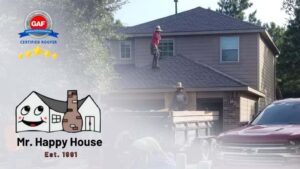
Best GAF Certified Roofers in The Woodlands, TX – Quality Roof Replacement, Gutters & Siding
Best GAF Certified Roofers in The Woodlands, TX – Quality Roof Replacement, Gutters & Siding Best GAF Certified Roofers in The Woodlands, TX – Quality
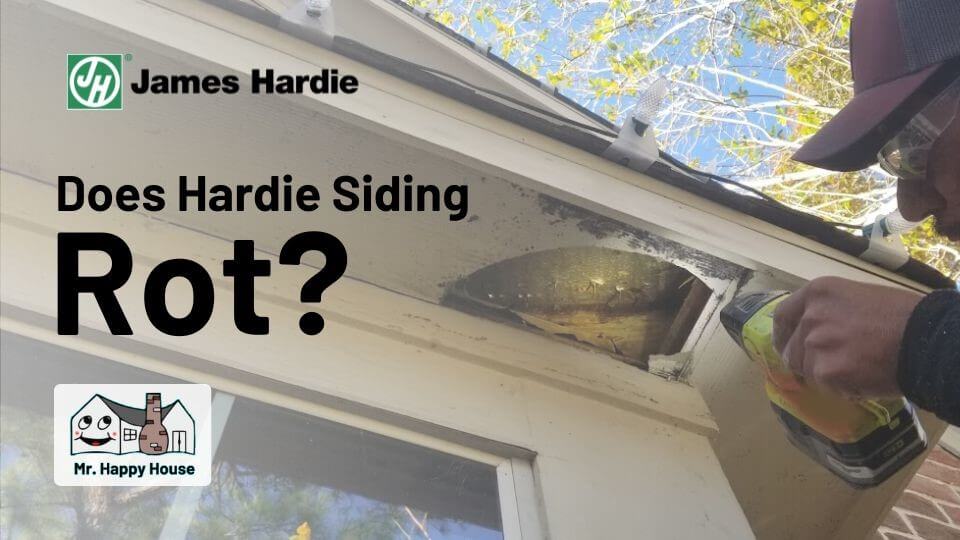
In the realm of exterior siding for the home, the name James Hardie resonates with a reputation for unparalleled durability, notably its remarkable resistance to rot, but a question that gets asked frequently is does Hardie Siding rot?
This article navigates through the composition, features, and misconceptions surrounding Hardie siding, shedding light on why it has become a preferred choice for those prioritizing both aesthetic appeal and long-lasting resilience.
Join us as we explore how Hardie siding’s resistance to rot not only defines its place in the construction industry but also assures homeowners of a robust and enduring solution for their homes.
The short answer is no, James Hardie Siding and Trim products do not rot. Hardie siding’s resistance to rot begins with a carefully engineered composition that combines durability and functionality.
Comprising a mixture of cement, sand, and cellulose fibers, this siding material is inherently resistant to moisture, a primary factor contributing to rot in many traditional siding materials. The cement component ensures a solid, stable structure, while the addition of sand provides texture and further reinforces the siding against external pressures.
The incorporation of cellulose fibers, derived from wood, not only enhances the siding’s strength but also aligns with eco-friendly practices. Together, these elements create a formidable barrier against the environmental factors that often lead to rot, making Hardie siding a standout choice for those seeking a siding material that can endure diverse climates and weather conditions.
The meticulous balance of these components showcases James Hardie’s commitment to crafting a siding solution that goes beyond aesthetics, prioritizing longevity and resilience against the elements.
In order to understand why Hardie Siding does not rot, you need to know that Hardie siding’s durability is not only attributed to its composition but is also closely linked to its ability to withstand diverse environmental challenges.
Whether your home is subjected to the relentless rains of the Pacific Northwest or the intense sun of the Southwest, Hardie siding holds its ground. James Hardie Siding and Trim product’s resistance to rot is particularly evident in regions where high humidity or frequent precipitation could pose a threat to other materials.
Unlike some traditional wood siding types that may succumb to moisture, Hardie siding remains steadfast, maintaining its structural integrity and appearance over time. Its capacity to resist the impact of environmental factors makes it a reliable choice for homeowners seeking longevity in their exterior cladding, ensuring that the aesthetic appeal of their homes endures through varying climates and seasons.
Wood siding tends to rot, which is why many homeowners are concerned if in fact does Hardie Siding rot, however, rot is common in wood, of which Hardie Siding is not made of wood.
Wood rot is a natural process caused by the action of fungi. Several factors contribute to the development of wood rot, and they typically involve a combination of moisture, warmth, and the presence of fungi. Here are the key factors that lead to wood rot:
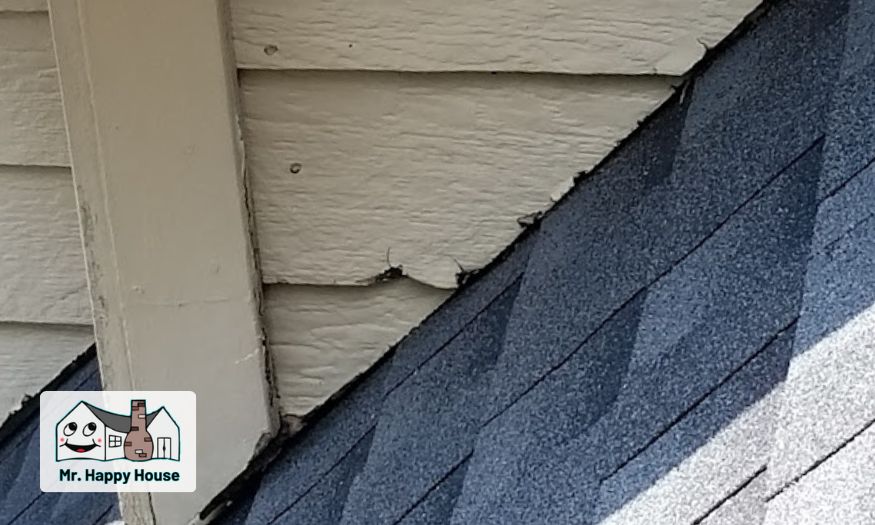
Moisture: Excessive moisture is the primary catalyst for wood rot. When wood is consistently exposed to high levels of moisture, whether from rain, leaks, or humidity, it creates an environment conducive to fungal growth. Fungi require water to thrive, and prolonged exposure to moisture softens the wood fibers, making it more susceptible to decay.
Fungi: Various types of fungi, such as brown rot, white rot, and soft rot, are responsible for breaking down the cellulose and hemicellulose components of wood. These fungi release enzymes that degrade the wood’s structure, leading to decay. Fungal spores are omnipresent in the environment, and when provided with the right conditions, they colonize and grow on the wood surface.
Warmth: While fungi can grow in a range of temperatures, warmer conditions often accelerate the process of wood decay. In hotter climates, wood rot is more prevalent during the warmer seasons when temperatures favor fungal activity.
Lack of Air Circulation: Poor air circulation around wood surfaces can contribute to moisture retention, creating an environment favorable for fungal growth. Stagnant air prevents the wood from drying effectively, increasing the likelihood of rot.
Decay-Resistant Wood Species: The susceptibility of wood to rot also depends on the tree species. Some types of wood, like cedar and redwood, naturally contain compounds that resist decay, making them more resistant to fungal attack compared to other wood species.
The above factors can make wood siding unfavorable to have on your home, with more upkeep, more frequent house painting, and repairs to sustain its structure, which is not the case with James Hardie and Trim products.
Despite Hardie siding’s well-established reputation for resisting rot, there are occasional misconceptions that merit clarification. Some may question the material’s vulnerability based on preconceived notions about cement-based products. It’s crucial to dispel any myths and affirm that Hardie siding, when properly installed and maintained, is exceptionally resilient to rot.
The misconceptions often stem from a lack of awareness regarding the specific composition and engineering behind Hardie siding.
By addressing these misconceptions, we aim to provide a comprehensive understanding of the material’s true capabilities, ensuring that homeowners and builders can make informed decisions based on the proven track record of Hardie siding in resisting the detrimental effects of rot over time.
Here at Mr. Happy House, we are the top Siding Contractor in The Woodlands and Northwest Houston area specializing in installing Hardie Siding & Trim since it’s release in the 1990s. With over 10,000 projects completed, we find that James Hardie Siding is the best option for house siding for not only long term durability and protection, but for curb appeal or increased home value as well.

While Hardie siding’s resistance to rot is inherent, the impact of proper installation cannot be overstated. Correct installation practices play a pivotal role in enhancing the siding’s performance and longevity.
Ensuring that the siding is installed according to the manufacturer’s guidelines and industry best practices is essential for optimal results. Properly sealed joints, secure fastening, and attention to flashing details are among the critical aspects that contribute to the siding’s ability to resist rot effectively.
A meticulous installation not only maximizes the benefits of Hardie siding but also minimizes the risk of potential issues that may arise if installation standards are not met. Homeowners and contractors alike should prioritize precision during the installation process to fully leverage the rot-resistant qualities inherent in Hardie siding.
James Hardie Siding stands as a beacon of endurance, showcasing an impressive resistance to rot that defines its reputation. As we’ve explored the composition, debunked misconceptions, and emphasized maintenance practices, it becomes clear that Hardie siding is more than a surface—it’s a resilient shield against the elements.
Homeowners choosing Hardie siding not only invest in an aesthetically pleasing solution but also secure the long-lasting integrity of their homes. With a manufacturer-backed warranty instilling confidence and proper installation by a professional siding contractor like Mr. Happy House, Hardie siding emerges as a reliable choice for those seeking a rot-resistant, durable, and low-maintenance exterior solution.
We hoped you loved this article on whether or not Hardie Siding rots and if this is fact or myth, please share and tune in for more roofing, siding, and house painting content!
Our Services:













Best GAF Certified Roofers in The Woodlands, TX – Quality Roof Replacement, Gutters & Siding
Best GAF Certified Roofers in The Woodlands, TX – Quality Roof Replacement, Gutters & Siding Best GAF Certified Roofers in The Woodlands, TX – Quality
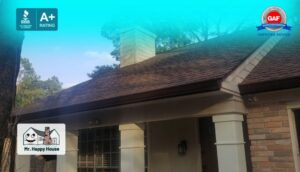
Are Gutters Part of the Roofing System?
Are Gutters Part of the Roofing System? Are Gutters Part of the Roofing System? When it comes to home maintenance, gutters often seem like a
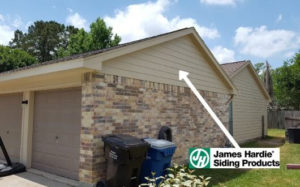
Why James Hardie is The Best Option for Home Siding
Why James Hardie is The Best Option for Home Siding Why James Hardie is The Best Option for Home Siding James Hardie stands out whether











